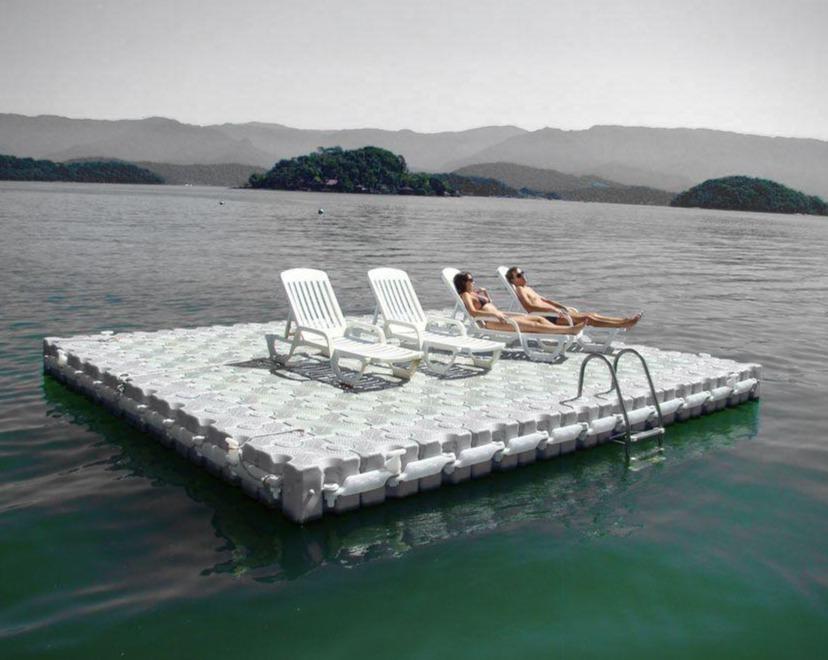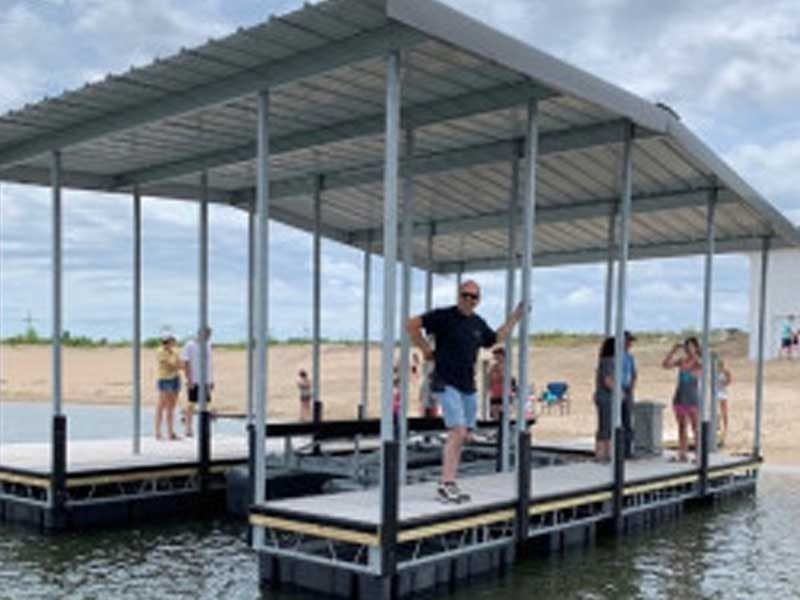Upgrade Your Beachfront With Sturdy Floating Docks
Upgrading your waterside with sturdy floating docks can substantially boost both performance and looks, offering a flexible remedy for various water activities. With a variety of materials offered, consisting of low-maintenance alternatives and traditional wood, choosing the ideal dock can enhance your individual style and meet useful requirements.
Advantages of Floating Docks
Floating docks deal a wide variety of advantages that improve their appeal for numerous maritime applications. Among the key advantages is their versatility to altering water levels - floating dock builder. Unlike conventional fixed docks, floating docks fluctuate with the tide, making certain regular ease of access for watercrafts and boat regardless of environmental problems. This function substantially reduces the threat of damage to vessels, as they remain securely anchored even throughout changes in water depth.
Furthermore, floating docks are easier to transfer and set up, providing versatility for short-lived or seasonal usage. Their modular design allows for personalization to fit details requirements, whether for private marinas, property beachfronts, or commercial applications.
Moreover, floating docks develop very little disturbance to the aquatic atmosphere, preserving regional ecosystems and decreasing the chance of erosion. They likewise give enhanced security and stability for individuals, as their resilient nature offers a more forgiving surface area than inflexible frameworks.
Additionally, floating docks can facilitate a diverse variety of tasks, such as angling, swimming, and entertainment boating, making them an important possession for waterside advancement. Their flexibility and functionality make floating docks a recommended selection for a selection of maritime projects.
Picking the Right Products
Choosing appropriate products for floating docks is essential to their long life, efficiency, and total effectiveness. When choosing products, take into consideration factors such as environmental direct exposure, upkeep needs, and architectural stability. Typical materials include wood, plastic, aluminum, and composite alternatives, each offering distinctive benefits and negative aspects.
Timber, while cosmetically pleasing, needs regular upkeep to stop rot and degeneration. Pressure-treated wood can enhance durability, yet it might still surrender to water damages with time. Plastic drifts, commonly made from high-density polyethylene, are resistant to corrosion and require marginal maintenance, making them an appealing option for low-maintenance applications.
Aluminum is another viable alternative, understood for its strength and light-weight residential or commercial properties. It is immune to corrosion and can endure severe climate condition, although it might be much more expensive than various other materials. Compound materials incorporate the very best attributes of wood and plastic, using a durable and low-maintenance alternative that mimics the look of wood without the linked downsides.
Eventually, the choice of product should straighten with the intended usage, environmental factors to consider, and budget plan constraints, making certain a long lasting and functional floating dock that fulfills your particular demands.
Installment Refine Overview
The successful installment of a floating dock depends on mindful planning and implementation, ensuring that it operates properly in its designated environment. The primary step entails evaluating website conditions, including water depth, coastline features, and dominating weather patterns, which Clicking Here will notify the dock layout and anchoring system.
Following the site evaluation, the following stage is to prepare the floating dock components. This consists of constructing the frame, protecting drifts, and affixing any kind of necessary hardware. It is vital to make certain that all connections are robust and waterproof to hold up against aquatic problems.
Once the dock is assembled, the installation process begins with placing the dock in the water. This can involve a crane or other lifting devices, especially for larger structures. Proper alignment is vital for performance and safety and security.

Upkeep Tips for Long Life
Normal maintenance is crucial for guaranteeing the longevity and optimum performance of a drifting dock. To achieve this, start with routine examinations a minimum of two times a year, concentrating on the honesty of the dock's structure, consisting of the flotation gadgets and attaching hardware. Seek indications of damages, deterioration, or wear, and attend to pop over to these guys any problems without delay to stop more damage.
Cleaning up is an additional crucial element of upkeep. Remove debris, algae, and barnacles from the dock's surface area to prevent slippery problems and keep aesthetic appeal. Utilize a light detergent and a soft brush to stay clear of harming the dock's materials.
Additionally, make sure that the dock is effectively anchored and secured to withstand seasonal modifications in water degrees and climate condition. Examine the anchoring system for stability and make adjustments as required.
Enhancing Your Outside Aesthetic
To produce an aesthetically appealing outdoor space, integrating a floating dock can dramatically boost the total visual of your beachfront home. Floating docks are not just functional but can also serve as a striking focal point that complements the natural environments - floating dock services. Readily available in numerous products and styles, these docks can be tailored to match your building's building design and landscape
The addition of decorative elements, such as incorporated lights or elegant railings, even more elevates the dock's aesthetic allure. Take into consideration utilizing natural wood coatings, which mix perfectly with the environment, or selecting contemporary materials like light weight aluminum or composite decking that offer a smooth, modern appearance.
Strategically placing planters or seating locations on or around the dock can create welcoming areas that encourage leisure and pleasure of waterfront sights. Furthermore, including shades and textures that integrate with your landscape will develop a cohesive visual throughout your outdoor area.

Conclusion

Updating your beachfront with resilient floating docks can substantially boost both performance and aesthetics, offering a functional remedy for numerous water activities. Unlike traditional set docks, floating docks surge and loss with the tide, making certain consistent availability for watercrafts and boat regardless of environmental problems.Picking appropriate materials for floating docks is essential to their longevity, performance, and general performance.As soon as the dock is put together, the setup procedure starts with placing the dock in the water.In summary, floating docks offer various advantages, consisting of flexibility to water degree adjustments and a variety of material options.